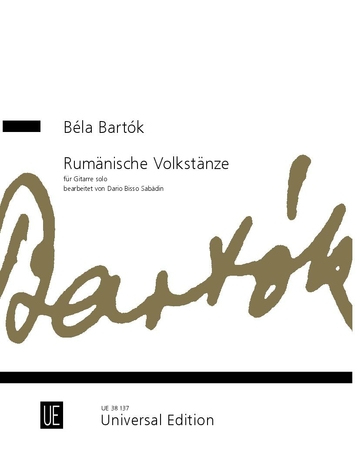Rumänische Volkstänze
Description
Bartók collected the material for the Romanian Folk Dances in Transylvania at the beginning of the century; Transylvania is the place iwhere this folk-dance music is part of everyday life. Bartók considered this music so valuable that it became his new source of renewal of his musical language. This music was new in nature; it sounded strange to ears that were used to the classical tradition and consequently necessitated an exact specification of musical articulation to reproduce the character of the folk dances as authenitically as possible.
Originally written for piano, when transcribing this work for guitar, the publisher left Bartók's instructions (tempo, dynamics, staccato, tenuto, slurs) unchanged. This seemed to be indispensable to achieve a reproduction of the folk dances true to their character.
- Winkel Antwerpen : Disponible
